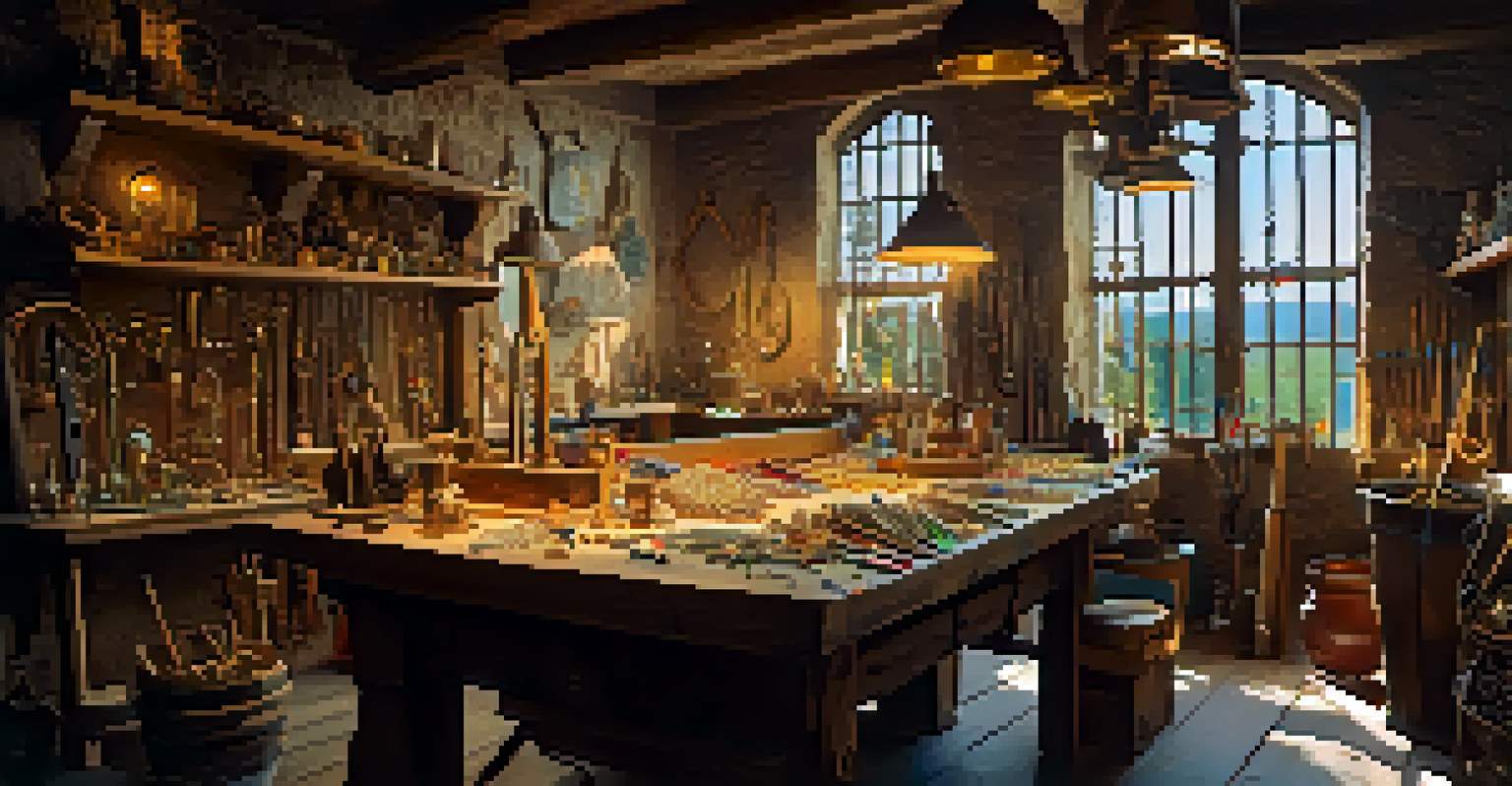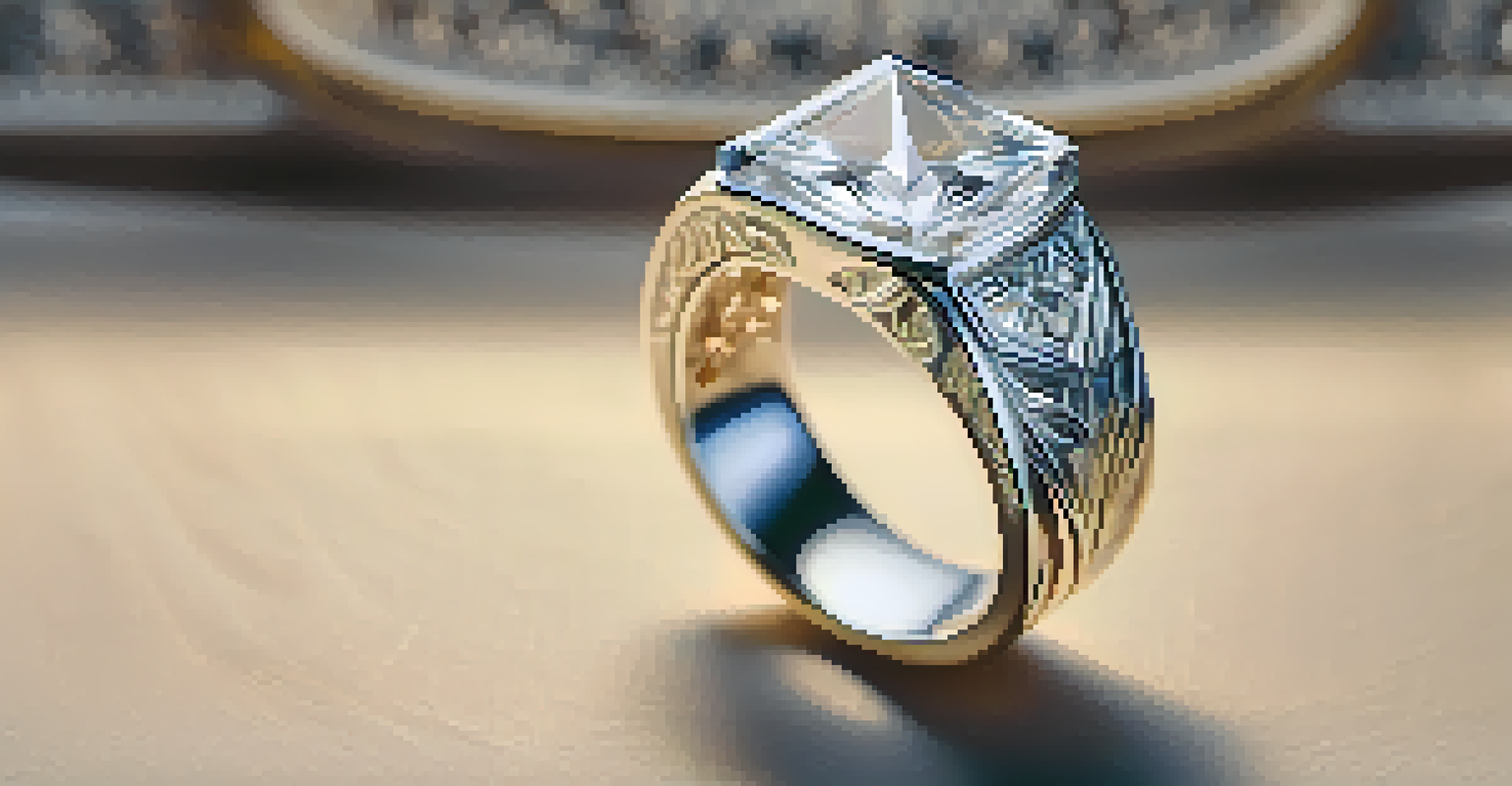The History and Evolution of Jewelry Making Techniques

Ancient Beginnings: The Birth of Jewelry Making
Jewelry making dates back to ancient civilizations, where adornments served practical and symbolic purposes. Early humans crafted jewelry from natural materials like shells, bones, and stones, often as a means of self-expression or status indication.
Jewelry is a very personal thing. It should tell a story about the person who’s wearing it.
These early pieces were not just decorative; they held cultural significance, often used in rituals or as talismans for protection. For instance, the ancient Egyptians adorned themselves with intricate jewelry that reflected their beliefs about the afterlife.
As societies evolved, so did the complexity of jewelry. The transition from primitive adornments to more sophisticated designs marked the beginning of a fascinating journey in craftsmanship.
The Influence of Ancient Civilizations on Jewelry
Civilizations like the Egyptians, Greeks, and Romans significantly influenced jewelry-making techniques. The Egyptians mastered the art of goldsmithing, creating pieces that dazzled with their craftsmanship and symbolism.

In ancient Greece, jewelry became an expression of beauty and status. Techniques such as filigree, involving intricate wire work, were developed, showcasing a blend of artistry and skill.
Jewelry's Ancient Roots and Significance
Jewelry making originated in ancient civilizations, serving both practical and symbolic roles in society.
Similarly, the Romans popularized the use of gemstones, paving the way for the incorporation of colorful stones in jewelry. Each civilization contributed unique techniques that enriched the art of jewelry making.
Medieval Jewelry: A Blend of Function and Fashion
During the Medieval period, jewelry took on new meanings, often reflecting the wearer’s social status. Pieces were crafted with a blend of religious symbolism and ornate designs, making them both functional and fashionable.
The joy of dressing is an art.
The use of enamel in jewelry became prominent during this time, allowing artisans to add vibrant colors to their creations. This technique not only enhanced the visual appeal but also offered a form of protection to the metal underneath.
Moreover, the rise of Christianity influenced jewelry design, leading to the creation of crosses and other religious symbols that were worn as badges of faith.
Renaissance and Baroque: The Art of Extravagance
The Renaissance period marked a significant turning point in jewelry making, characterized by a revival of classical ideals and a focus on individual artistry. Jewelers began to experiment with new techniques, such as engraving and stone setting.
The Baroque era brought even more flamboyance, with jewelry pieces often featuring large, elaborate designs and an abundance of gemstones. This period saw the rise of statement pieces that showcased wealth and power.
Cultural Diversity in Jewelry Designs
Different cultures significantly influence jewelry styles and techniques, creating a rich global tapestry of designs.
Artisans during this time were not just craftsmen but also artists, pushing the boundaries of creativity and innovation in their work.
The Industrial Revolution: Mass Production and Accessibility
The Industrial Revolution brought about a seismic shift in jewelry making, introducing machinery that allowed for mass production. This change made jewelry more accessible to the general public, breaking class barriers in adornment.
While this era saw the rise of costume jewelry, traditional methods were still cherished. Craftsmen began to blend industrial techniques with artisanal skills, creating hybrid pieces that appealed to diverse tastes.
This democratization of jewelry meant that more people could express their individuality through adornments, leading to a wider variety of styles and designs.
Modern Techniques: A Fusion of Tradition and Innovation
Today’s jewelry making is a fascinating blend of traditional techniques and modern technology. Jewelers now employ methods like 3D printing alongside time-honored practices such as hand engraving and stone setting.
This fusion allows for greater creativity and customization, enabling artisans to design unique pieces that cater to personal preferences. Moreover, sustainable practices have gained traction, with a focus on ethical sourcing of materials.
Modernization and Sustainable Practices
Today's jewelry combines traditional craftsmanship with modern technology, emphasizing creativity and ethical sourcing.
As we embrace advancements in technology, the art of jewelry making continues to evolve, reflecting contemporary values and aesthetics.
Cultural Influences and the Global Jewelry Landscape
Jewelry making is not only an art form but also a reflection of cultural heritage. Different cultures influence styles, materials, and techniques, resulting in a rich tapestry of designs from around the world.
For instance, Indian jewelry is renowned for its intricate craftsmanship and the use of vibrant gemstones, while Scandinavian designs often emphasize minimalism and functionality. These cultural variations enrich the global jewelry market.

As globalization continues to connect us, the exchange of ideas and techniques among jewelers worldwide fosters innovation and creativity, making the art of jewelry making truly universal.